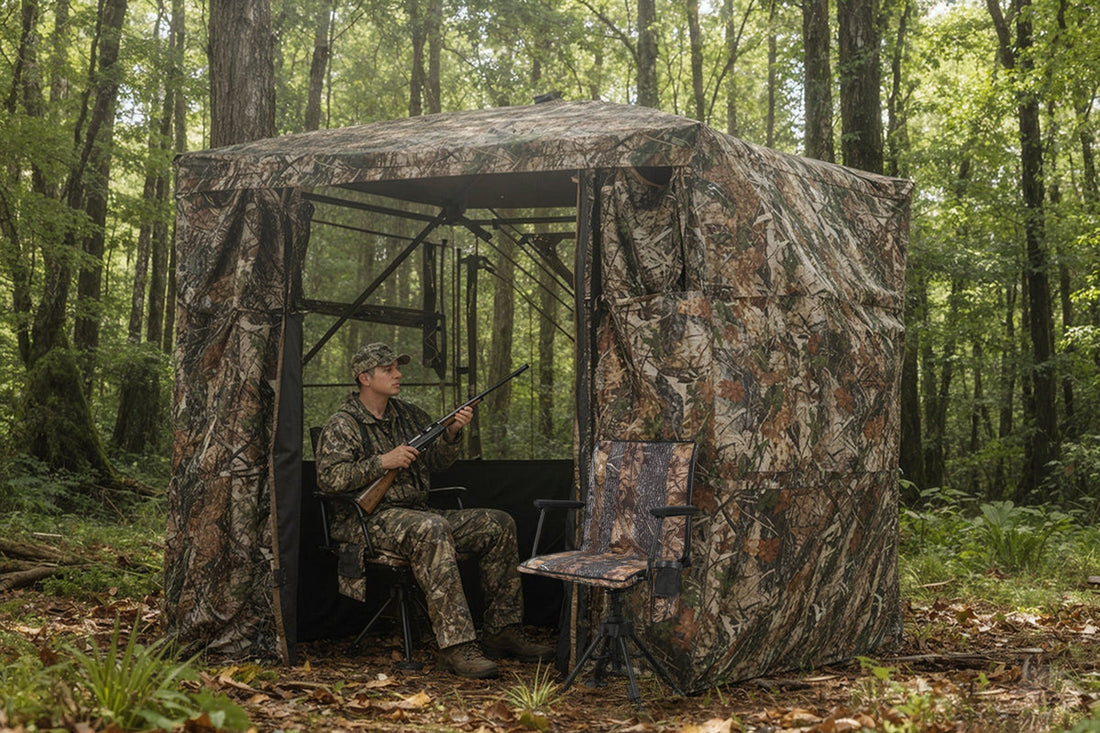October marks a turning point in the hunting season. The early rush of opening days has passed, and nature begins to settle into a slower rhythm. The trees are shifting from green to amber, the mornings grow cooler, and animal behavior changes with the season. For many hunters, this is the most rewarding time of the year — a period that demands patience, strategy, and deep awareness of the environment.
Mid-season hunting in October can be unpredictable. Some days feel quiet and still, while others explode with activity just before dusk. To make the most of this transitional time, hunters need to think beyond routines — to move, observe, and adapt as the woods evolve around them.
Understanding the October Transition
October isn’t just another month; it’s a shift in rhythm. Deer and other game animals begin to move differently, often less predictably. Their feeding patterns, travel routes, and reactions to human scent can all change overnight. Recognizing and adapting to these subtle transitions is what separates a successful hunt from a frustrating one.
Follow the Food
Food is the heartbeat of wildlife behavior. As crops are harvested and acorns begin to drop, deer and turkeys adjust their routines to find new feeding grounds. Hunters who keep track of food sources — whether that’s a newly harvested cornfield or an oak ridge heavy with mast — often find themselves in the right place at the right time.
Scouting Tip:
Spend time walking the edges of fields and woodlots to locate fresh tracks and droppings. You may discover a new travel corridor forming between feeding and bedding areas. Relocating your hunting blind to these transitional paths can make a huge difference in October.
Mind the Wind and Weather
The wind remains one of the most critical factors in any successful hunt. October’s shifting temperatures often bring swirling winds that can quickly betray your position. Plan your setups and entry routes carefully, always staying downwind of the area you expect game to appear.
Pro Insight:
Many seasoned hunters keep a small puff bottle or piece of milkweed fluff handy to check subtle wind currents around their stand. Even a slight change can mean the difference between being undetected or sending your scent straight toward your target.
Prepare for Long, Cold Sits
October mornings and evenings can get chilly, especially in the northern states. Layering becomes your best friend — start with a moisture-wicking base, add insulation, and finish with a windproof outer layer. A comfortable seat or hunting blind helps you stay still longer, giving you the edge when movement is your biggest enemy.
While gear isn’t the focus of October hunting, a few smart choices can enhance comfort and concentration. Waterproof boots, a quiet hunting chair, and a reliable blind can make a noticeable difference in endurance and patience during extended hunts.
Stay Flexible and Observant
Perhaps the most valuable October hunting tip is to stay flexible. Don’t get too attached to a single spot or method. Game animals respond to environmental cues — cold fronts, moon phases, hunting pressure — and you should too. If sign dries up in one area, move. If the weather shifts, adjust your schedule. Hunting is an ever-evolving puzzle, and October is when that puzzle changes daily.
Fine-Tuning Your October Strategy
Once you’ve mastered the basics of mid-season adaptation, it’s time to fine-tune your tactics. October offers unique challenges but also opportunities for hunters who think ahead and stay alert to small details.
Use Subtle Calls and Natural Scents
As the pre-rut approaches, light grunts and soft doe bleats can attract curious bucks. But be cautious — overcalling can send them running. The goal in October isn’t dominance; it’s curiosity. Keep calls minimal and always match your behavior to the season’s natural energy.
Bonus Tip:
When hunting from a blind, natural scents and light airflow management become even more important. Keep your area clean, minimize movement, and open just enough windows to maintain visibility while preserving concealment.
Time Your Hunts Around Weather Fronts
In October, a cold front can transform animal activity overnight. Pay attention to pressure changes and temperature drops — these often trigger feeding sprees or pre-rut movement. Plan to hunt the day before and the day after a major weather shift for the best odds of success.
Enjoy the Season
Amid all the strategy and preparation, don’t forget to enjoy October for what it is — one of the most beautiful months to be outdoors. The smell of leaves, the sound of geese overhead, and the calm of a frosty sunrise are reminders of why we hunt. Whether you harvest or not, every October hunt offers something worth remembering.
Hunting isn’t just about the trophy.
It’s about the moments between — the quiet patience, the rhythm of the woods, and the lessons learned through observation. October rewards those who slow down and truly listen to the land.

